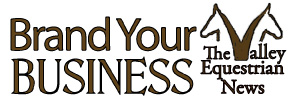St. Paul, Minn. – Horse owners are encouraged to work with their veterinarian to make sure their animals are up to date on vaccines to reduce the risk of illnesses from disease carrying insects. Vaccines for Eastern Equine Encephalitis (EEE) and West Nile Virus (WNV), two of the most common diseases spread by insects during warmer months in Minnesota are widely available and have been proven to be effective in preventing infection.
EEE and WNV are regularly found in the United States with birds serving as the primary host of the viruses. The viruses circulate between infected birds and mosquitoes. Once infected, mosquitoes can transmit the virus to horses or people. The virus can cause encephalomyelitis, an inflammation of the brain and spinal cord. Infected horses may or may not show neurological symptoms and many recover completely, especially those who have a history of annual vaccination.
“Vaccination schedules vary depending on horse activities and you should always work with your veterinarian to determine what’s best for the animal,” said Dr. Brian Hoefs, Board of Animal Health Senior Veterinarian. “In addition to vaccines, there are other important things owners can do to create a lower risk environment to reduce the presence of insects that spread these diseases.”
Take these steps to reduce disease risk by reducing mosquitoes and other biting insects.
- Change water in drinking troughs every week.
- Mow long grass.
- Drain stagnant water puddles.
- Remove items mosquitoes use for breeding grounds, like old tires and tin cans.
- Place and maintain screens over windows and stable doors.
- Use mosquito repellents to protect horses and people from mosquito bites.
These measures are especially important for Equine Infectious Anemia (EIA), which is primarily spread through horse and deer fly bites. There is no vaccine for EIA but good preventative practices and testing with the “Coggin’s Test” can reduce risk. In addition to pests, people can also spread it between horses by using contaminated needles or other equipment not sanitized after working with infected horses, mules or donkeys.
Biosecurity is the best way to prevent many diseases, which can spread by direct contact with infected horses or with contaminated objects like tack, feed and water buckets, grooming equipment, and a person’s hands or clothing. Other measures, like isolating new horses until they’re tested for diseases like EIA are also recommended. Minimizing or eliminating contact between non-exposed and infected horses is instrumental in preventing spread of the disease.
Another way the Board of Animal Health protects animals in Minnesota is through importation requirements. Horses imported into Minnesota must be accompanied by a certificate of veterinary inspection (CVI) that includes official identification and the date of the last negative Coggin’s Test, which must’ve been conducted within 12 months prior to the date of importation. The following are exceptions to the CVI requirement:
- Horses brought into the state for participation in trail rides or exhibitions; or
- Horses entering a veterinary facility for treatment, surgery, or diagnostic procedures and returning to the state of origin with no change in ownership.
Horses exempt from CVI requirements are still required to have a negative Coggin’s Test within the previous 12 months to enter Minnesota. Suckling foals accompanying a negative dam are the only exemption to this regulation.
Minnesota also accepts an Extended Equine Certificate of Veterinary Inspection (EECVI) for horses imported into Minnesota from origin states approving the use of the EECVI. Currently, the only company offering an EECVI option is Global VetLink. Please contact the company for additional information including an up to date list of participating states.
# # #






















































